Travel Itinerary for One Week in Beijing
Beijing is the city I couldn’t have missed during my trip to China (and you shouldn’t either). In addition to being one of the oldest capitals in the world, Beijing is the cultural hub of China, filled with hutongs, ancient temples, and fast-growing tech industries. If you’re planning a trip to Beijing, you have probably noticed that it has so much to offer. This post covers the travel itinerary for one week in Beijing with travel tips from my own experience.
In fact, I have only scratched the surface while visiting these sites. By following this one-week travel itinerary, you’ll make the most of your time in Beijing, especially if you’re a first-time visitor.
Travel Itinerary for One Week in Beijing
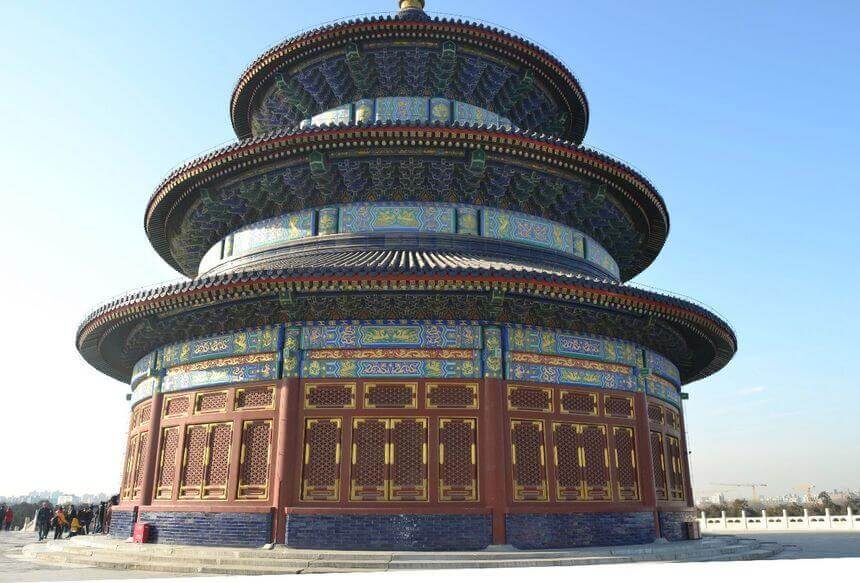
5 Reasons to Start Your China Trip in Beijing
1. Beijing is a great starting point for any China trip. It has a great transport infrastructure – you can reach any part of the city by metro, bus, taxi, train, or even pedicab (though beware of scams!).
2. China’s capital city is the place to explore the culture and traditions of the entire country. I would highly recommend visiting the Yonghe Lamasery (a blend of Chinese and Tibetan architecture) and the Beijing Botanical Garden, a serene escape from the crowds.
3. Beijing is a fast-developing city. It is home to several renowned universities and the Zhongguancun technology hub. Meanwhile, there are a few remaining hutong neighborhoods where I caught a glimpse of ancient China.
4. If you’re not planning to stay for a week, Beijing offers a 72-hour visa-free policy. This policy allows citizens of 50+ countries to explore Beijing for three days without requiring a visa. It’s a convenient option if you’re passing through Beijing Capital International Airport. Here’s how you can obtain a 72-hour visa to China.
5. Beijing is generally a safe city for most foreigners. While some areas may be challenging to navigate, locals are usually willing to assist. Getting around by subway is straightforward as announcements are commonly made in English. Exploring shops and markets is a worthwhile experience, offering a variety of goods from silk clothing to high-tech gadgets.
How to Get to Beijing City from Beijing Airport
Beijing International Capital Airport (IATA: PEK), the primary arrival point for most foreign tourists, is situated 32 km (20 miles) northeast of the city center. The airport offers various transportation options connecting it to Beijing city, including the airport express train, shuttle bus, and taxi services. Beijing’s layout follows a hub-and-spoke design centered around key landmarks such as the Forbidden City and Tiananmen Square. The downtown area is enclosed by the 2nd ring road, while the urban zone extends between the 2nd and 5th ring roads.
Airport Express Train (priced at 29 yuan/about $4.3)
Probably the most convenient way to reach downtown (as well as getting around Beijing) is via the Airport Express line. I definitely prefer the train when I have my backpack light and a hotel near a subway station.
The Airport Express Train links Beijing Capital International Airport with the city center. Commencing from Terminal 3 (T3) and passing through Terminal 2 (T2), the train reaches its final stop at Dongzhimen within 6 minutes.
At Dongzhimen, passengers can transfer to Line 2, a circular route encircling the city center. Disembark at Qianmen (priced at 4 yuan/about $0.6) to access Beijing’s city center, with Tiananmen Square and the Forbidden City within walking distance.
Beijing Airport Express Train Key Details
The ride will set you back 25 yuan ($3.7), compared to other subway lines in Beijing ranging from 3 yuan to a maximum of 9 yuan.
Operating Hours: 06:22-22:52 from PEK T3 to Dongzhimen; 06:00-22:30 from Dongzhimen to PEK T3. Trains depart every 12 minutes.
Airport Shuttle Bus (priced at 29 yuan/about $4.3)
No. 3 Airport Shuttle Bus operates every 30 minutes from 05:30 to 21:00.
The bus journey to the city center typically lasts around an hour.
Shuttle bus ticket counters are located on the airport’s ground floor near Gates 7 and 9 in T3, Gate 11 in T2, and Gate 7 in T1.
Night shuttle buses to the city center operate between 21:00 and 04:00, departing when there are more than 6 passengers on board, with fares around 50 yuan (approximately $7.5).
Taxi Service (priced at 100-150 yuan/$15-22)
Beijing taxis start at 13 yuan ($2). A taxi ride from Beijing Capital International Airport to the city center, such as Tiananmen Square costs around 100 yuan ($15), inclusive of toll fees, while nighttime rates increase to approximately 150 yuan ($22) after 11 pm due to the night service surcharge.
I recommend using a taxi if you have the name and address of your hotel printed in Chinese. More importantly, ensure that the driver uses the meter, as instances of cheating foreigners are not uncommon. I have observed that some taxi drivers may request double the fare. Never opt for taxis that do not have a meter.
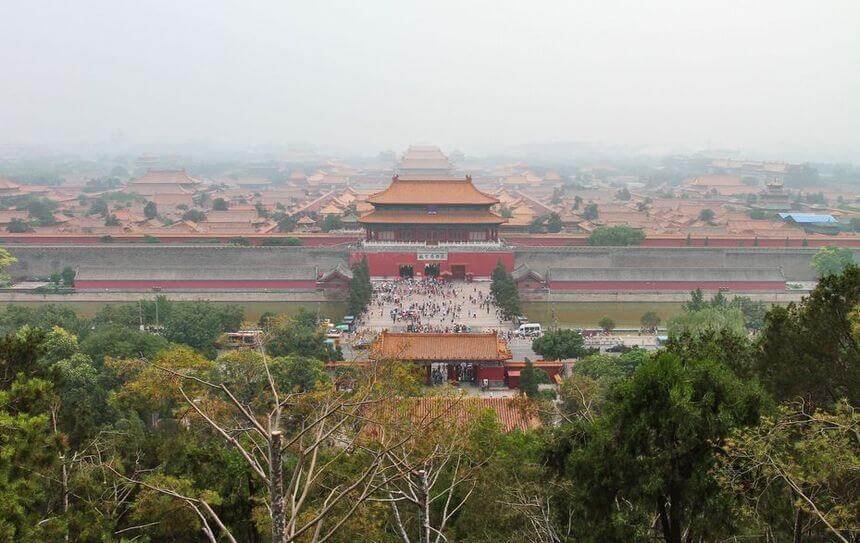
7 Days Beijing Itinerary: Best Places to Visit in Beijing
Day 1 of Your One Week in Beijing: Tiananmen Square, Forbidden City, Oceanarium
On my first day in Beijing, I woke up early and went for breakfast. Before heading out, I asked the staff to write down the Chinese names of the places I was planning to visit. I left the hotel intending to take a taxi. Unfortunately, luck wasn’t on my side that day as all the taxis passed by without stopping. After spending 30 minutes on the street, I decided to return to the hotel to hail a cab from the reception. Within 5 minutes, I was in a taxi on my way to Beijing’s attractions.
It took me approximately 25 minutes to reach Tiananmen Square. The square was truly impressive, capable of accommodating up to 1 million people simultaneously. I recommend visiting early in the morning to witness the flag-raising ceremony and grasp the immense size of the square. I missed the morning ceremony but caught the flag-lowering ceremony. On my way to Tiananmen Square, I observed large groups of Chinese individuals, typically elderly, engaging in Tai Chi. I later learned that you’re never too old to practice Tai Chi.
After exploring the square and capturing photos with the Mao Zedong Mausoleum in the background, I was ready to begin my exploration of the Forbidden City. Prior to that, I also visited Beihai Park, a serene location with a 10 RMB admission fee.
You Will Also Like: Things to do in London in Three Days
The Forbidden City (Gu Gong) is the largest existing palace complex globally. For centuries, the Gu Gong remained a forbidden place, accessible only with permission, and ordinary individuals were prohibited from entering. The Gu Gong comprises 9999 rooms, yet even today, half of the rooms remain closed to visitors.
Upon purchasing a ticket, there is an option to acquire an audio guide for an additional fee. During my initial visit to the Forbidden City, I opted for one, but I found it somewhat unsatisfactory. The English language guide cost 40 RMB, and I still question its value for money as I found the information provided not particularly valuable. Additionally, a 100 RMB deposit is required. As a historian, I prefer conducting my research on the subject during my next visit. If you decide to rent an audio guide, remember to bring your own earphones if you prefer not to use ones previously used by someone else.
Where to Find: 4 Jingshan Front St, Dongcheng, Beijing.
I love the Forbidden City. It fascinates me with its size, and visiting it feels like touching ancient and mysterious history. After leaving, I hailed a taxi to the Beijing Aquarium.
Quick Tip on Taxis in Beijing: Don’t repeat my mistake of standing on the highway frantically trying to hail a taxi. Look for a smaller side street instead. Chances are you will find one pretty quickly. The best way to catch a taxi is through the hotel reception, however. Always check the taxi driver’s license on the dashboard. If you can’t find his photo and registration number, avoid taking this taxi.
In fact, there are three public aquariums in Beijing. However, the one I am going to mention here is located in the Beijing Zoo. The aquarium layout consists of several small tanks designed to showcase the variety of species within a particular ecosystem, along with two large tanks featuring a wide range of sea species. I was fortunate enough to witness an oyster with a pearl inside. It would open its shell every two minutes, making the sight of the pearl a delightful experience.
Read Next: The Pros and Cons of Solo Travel
The main reef tank features several large windows and viewing tunnels. What I love most about this aquarium is its organic appearance. Unlike many other aquariums I have visited, this one is home to a significant number of turtles, reef fish, and stingrays. The downside is the price, which is ten times the cost of entry to the zoo. I believe it is definitely worth a visit, but be sure to avoid weekends.
I spent that evening wandering the streets, observing people, and exploring the neighborhoods.
Quick Tip: Most people in China don’t speak English or speak very poor English. That is why it is wise to always carry a business card of the hotel/hostel where you are staying. Before my trip to China, I also purchased a mini-phrasebook and had all the names of the places (e.g., subway stations, “How should I get to…”) written down on paper.
Day 2 of Your One Week in Beijing: Yíhéyuán Summer Palace and Yuanmingyuan
The Summer Palace is a highly popular destination in Beijing. Despite this, I wholeheartedly recommend not missing it. This UNESCO World Heritage Site dates back to the 12th century and has faced destruction twice in recent history. The original Summer Palace was burned down by Anglo-French forces in 1860 and looted in 1900 by the Eight-Nation Alliance at the end of the Boxer Rebellion. It acquired its current appearance by then and was transformed into a beautiful public park in 1924.
Quick Tip: Visit the Summer Palace as early as you can to avoid the crowds.
If you can be flexible with your dates, it is better to visit the Summer Palace in autumn when the gardens turn yellow and red, and the temperatures are cooler. I recommend allocating sufficient time for exploration as the sites are spread out across the grounds. It might take a full day to see everything. I spent six hours circling the park, admiring the Boat of Purity and Ease, and capturing photos from Longevity Hill. Visiting the Tower of Buddhist Incense requires an additional ticket. The general admission fee was 30 RMB as of 2024.
Where to Find: Beigongmen, Line 4, Exit D.
Yuanmingyuan (the Garden of Perfection and Light) Ruins
This place is less crowded with tourists and can easily be combined with a visit to the Summer Palace. Located a stone’s throw away from the Summer Palace, I went to Yuanmingyuan early one September morning, and guess what? It was completely empty! Don’t expect too much if you’re into architecture, though.
The gardens and ruins are the only remnants of the original main imperial residence of the Qianlong Emperor and his successors. Exploring the ruins felt akin to admiring palaces in Europe. The buildings have been heavily influenced by architectural ideas from Europe, which surprised me.
Exploring the grounds provides an insight into the grandeur of the palaces and gardens. Today, in areas that were once restricted to the common people, thousands of their descendants now take snapshots, fly kites, and have picnics. It’s a clear example of how things change over time. Admission: 15 yuan.
Where to Find: Subway Line 4, Yuanmingyuan, Exit B, 28 Qinghua Xilu Haidian District
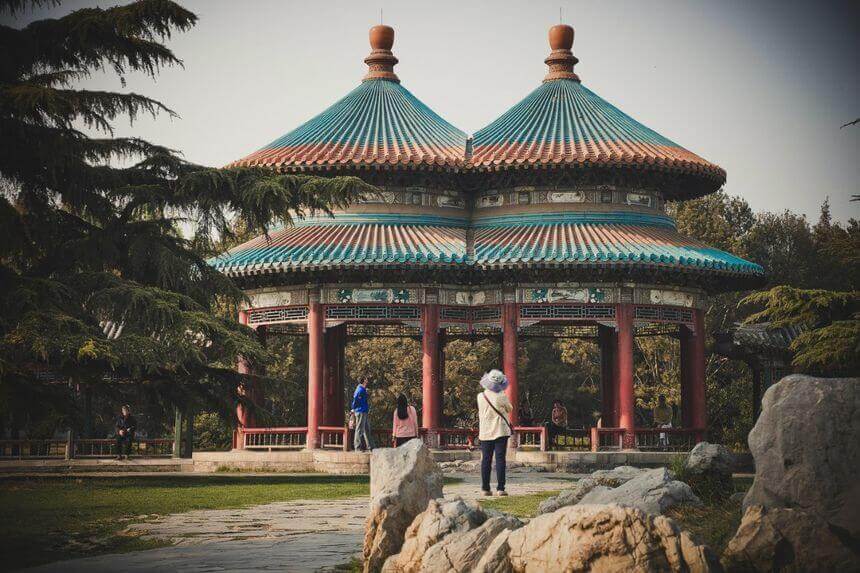
Day 3 of Your One Week in Beijing: The Temple of Heaven, Beihai Park, Prince Gong’s Mansion, Houhai
As I was planning my travel itinerary for one week in Beijing, the Temple of Heaven was high on my list of things to do. Situated in the southern Dongcheng district, it is just a 20-minute drive from the Forbidden City and can be best accessed from the Tiantan East Gate station. I combined visiting the Temple of Heaven and Beihai Park, which are quite far apart because I wanted to wander around Beijing and explore its central neighborhoods.
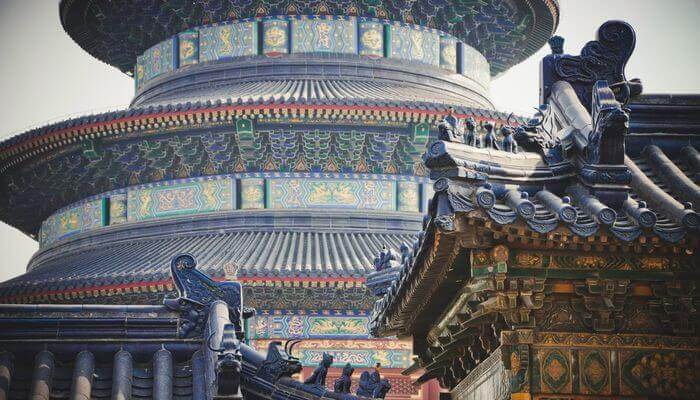
The Temple of Heaven was constructed in 1420 and holds significant religious importance. Today, the entire complex is divided into two sections. The outer section features well-maintained gardens, while the inner section comprises several smaller sections: The Imperial Vault of Heaven, the Hall of Prayer for Good Harvests, and the Circular Mound Altar. Tourists visit this site for good reason. The triple-gabled circular Taoist temple has a unique appearance. This location, where the Emperor once prayed for good harvests, has now been transformed into an expansive park.
This UNESCO site is open daily from 6:30 am to 10 pm. The temple sites within the gates are open from 8 am to 5:30 pm or until 6 pm from April to October.
Where to Find: I approached the park from the East Gate. Subway Line 5, Tiantan Dongmen Station, Exit A.
Beihai Park
These old imperial gardens have existed near the Forbidden City in some form since the 12th century. As one of the best classical gardens in Beijing, the entire place is filled with elderly people practicing tai chi, and parents with their kids on weekends.
During my visit, I took some photos of the White Pagoda and Yongan Temple. There was also an opportunity to take a boat ride across the pond, but I couldn’t bear the thought of paddling after the recent stroll.
Where to Find: Xicheng Qu, Wen Jin Jie, 1
Prince Gong’s Mansion
While Prince Qing was, in fact, only the third owner of the Mansion, the site is worth a visit. This traditional Chinese dwelling was constructed in the late 18th century during the Qing dynasty for a wealthy court official. Due to the twists and turns of life, the mansion was eventually bestowed upon Prince Qing.
I highly recommend this architectural gem to anyone interested in Chinese history. Thanks to the efforts of the Benedictine Order, who invested significant resources into its restoration, Prince Gong’s Mansion stands as one of the most well-preserved imperial buildings in Beijing. Situated across Di’anmen Waida Street from Beihai Park, you can also find a Peking opera house within the mansion.
Quick Tip: Most of the exhibitions are not friendly to non-Mandarin speaking travelers. The easiest way to deal with this is to do some research before you go. It worked just fine for me.
The entire site is quite extensive, with gardens in the north and buildings in the south. I spent 3 hours enjoying the pavilions, the city’s most spectacular garden, and artificial hills. The combination of courtyards, ponds, and the bamboo park makes it all seem larger than it really is. The admission fee is 40 RMB.
Where to Find: 17 Qianhai Xijie, Shichahai, Xicheng District
Houhai
I began my exploration of the area around Houhai Lake after visiting Prince Gong’s Mansion. While Houhai is not exactly an off-the-beaten-path destination, I believe it is worth a visit, especially for first-timers in Beijing. When I was planning my one-week travel itinerary in Beijing, I had no idea this place existed. Filled with hutongs, coffee shops, and restaurants, Houhai is an area I stumbled upon by chance.
Houhai, which translates to “Rear Lake,” is very popular with both locals and travelers. Although I didn’t notice many foreigners during my visit, Houhai appeared to be a beloved destination for locals who were strolling, cycling, and simply enjoying the area. The small lake creates a picturesque setting.
With numerous street vendors offering food options, you can grab a bite to eat and then take a leisurely walk along the banks. Alternatively, you can sit at one of the outdoor restaurants facing the lake. As evening falls, the cobbled streets of Houhai are illuminated with beautiful lanterns.
How to Get There: Bus routes 5, 60, 90, 107, and 204 stop at the Drum Tower, just east of Houhai.
Day 4 of Your One Week in Beijing: National Grand Theatre, Beijing Hutongs, The Beijing Ancient Observatory, Subway Line 8
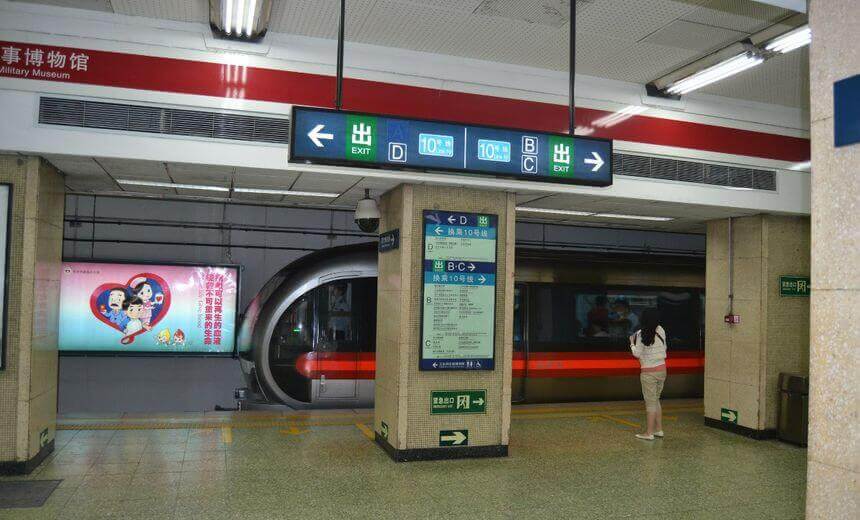
National Grand Theatre
You don’t have to be a theatre lover to visit The Giant Egg (as the National Grand Theatre is colloquially known). While it resembles more of a spacecraft, it was designed by the same architect who created some of the world’s astonishing airports in Dubai, Manila, and Orly Airport in Paris. It took Paul Andreu six long years to complete the Grand Theatre in 2007.
The main reason I visited was its futuristic shape. Constructed of titanium and glass and surrounded by an artificial lake, the theatre hosts various cultural events such as ballet, opera, Peking Opera, and drama. If you’re not interested in the cultural aspect of Beijing, you can explore the numerous shops and restaurants in the vicinity. The admission fee is 30 RMB.
Where to Find: 2, West Chang’an Avenue, Xicheng District, Beijing.
Beijing Hutongs
Exploring hutongs in Beijing is like stepping into history. Beijing is a city that still retains its main cultural identity through hutongs. I was well aware of these traditional neighborhoods and included them on my travel itinerary for one week in Beijing long before I set out on my journey. Hutongs are popular among locals and expatriates and are usually easily accessible by subway.
While hutongs can be found in many of Beijing’s districts, I chose to visit the cluster of hutongs near the Nanlouguxiang subway station. The area is filled with souvenir shops, eateries, bars, and even some hostels. During the day, the entire neighborhood is bustling with life, filled with noise, people playing games, and bustling along the streets, leaving a lasting impression.
Although many hutongs have been demolished to make way for multi-story buildings, the remaining hutongs still house the urban working class. This is why I often had to content myself with exploring the narrow residential passageways rather than entering the traditional courtyards. Allow yourself to get lost here. Due to the straightforward layout of the streets, you can easily find your way back on track.
Read Next: How to Deal With Travel Envy
Beijing Ancient Observatory
History isn’t the only field of science I’m fond of. As a kid, I remember gazing at the stars, trying to identify constellations. Due to this interest, I couldn’t have missed the Beijing Ancient Observatory.
Located only three subway stations away from Tiananmen Square, this is the oldest observatory in the world. Established during the Ming Dynasty, the observatory is situated atop a 15-meter-high brick tower, with some of its ancient artifacts visible from the street. I understand that astronomy might not be a topic that my readers are typically interested in, but I believe it can be a place of interest.
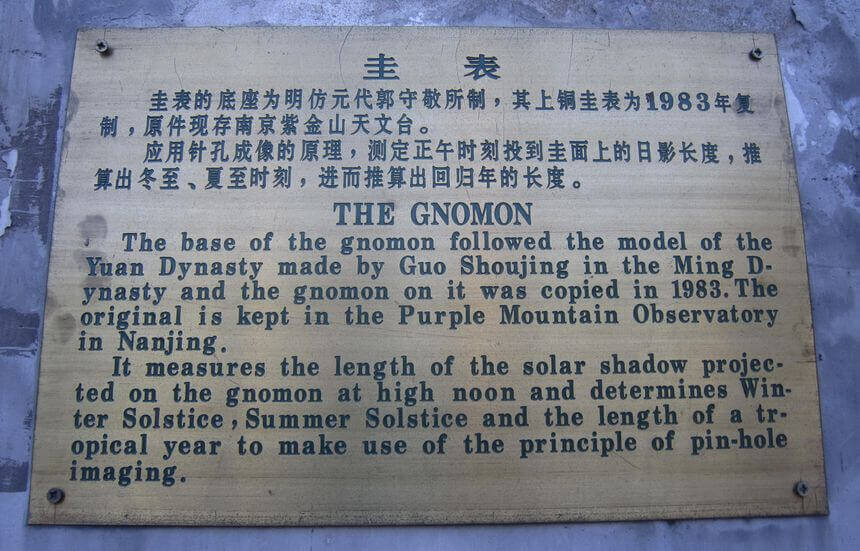
Apart from the ancient astronomical equipment and being one of the longest-operating astronomical observatories in the world, the site is surrounded by a tranquil garden. What sets this park apart from many others is that not many people are actually interested in astronomy. Therefore, you won’t find the site swarming with tourists even during peak season.
Where to Find: Lines 1 and 2 of the Subway to Jianguomen (Exit C). The admission is 20 RMB.
Beijing Subway Line 8
I spent the rest of the day riding on Subway Line 8. Constructed for the 2008 Beijing Olympics, I find it to be the most unique of all the subway lines.
Line 8 was initially opened with a small stretch between Beitucheng and the South Gate of Forest Park to assist spectators in reaching the Olympic Stadium.
Line 8 is connected to Line 13 at Huoying, Line 10 at Beitucheng, Line 2 at Guloudajie, and Line 6 at Nanlouguxiang. This connectivity makes the line a convenient mode of transport for reaching any of the Olympic venues.
Day 5 of Your One Week in Beijing: 798 Art Zone, Liulichang Street
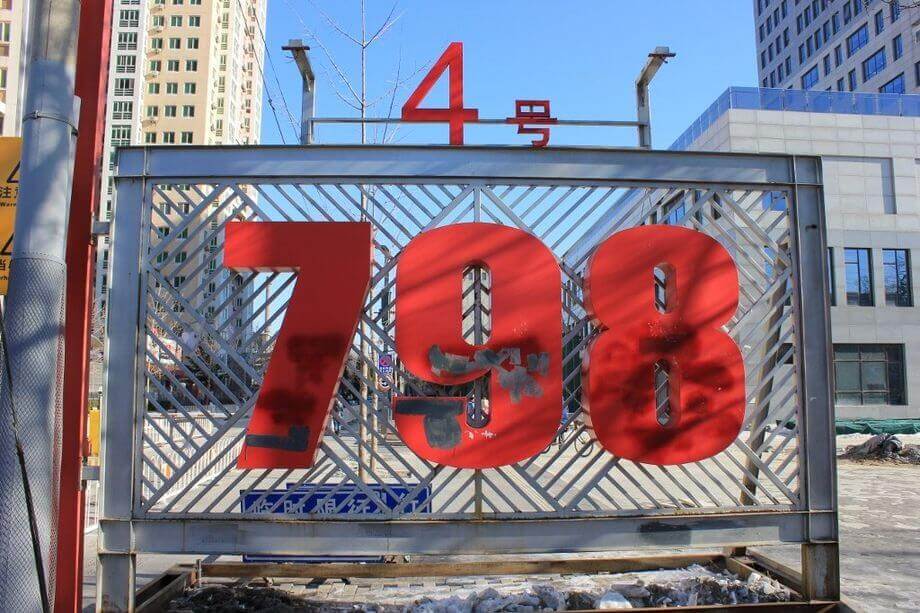
798 Art Zone
The 798 Art Zone wasn’t high on my bucket list, but I believe it’s a place that every traveler should visit at least once. Originally a vast area where foreign engineers and local workers were striving to create the military and industrial might of China, it has now transformed into the vanguard of the Chinese art scene, featuring graffiti murals, workshops, bookstores, and street vendors.
Despite the presence of art exhibits and museums, the Art Zone still maintains its industrial spirit. It serves as an excellent location for steampunk photography due to the abundance of pipelines and red-brick buildings. The overall ambiance is quite distinct from traditional Beijing architecture.
Read Next: Two Weeks In Thailand: The Perfect 14-Day Itinerary
While in the 798 Art Zone, you can consider original factory plants, steel structures, and rust-covered machinery as art pieces. The brutal-looking urban landscape is complemented by open-air galleries and socialist-realist sculptures. The neighboring districts are often transformed into a creative environment, repurposing old factory spaces into lofts and design bureaus.
How to Get There: Take Subway Line 14 and alight at Wangjing Nan Station. Exit from Exit B1. Then take bus 403 and disembark at Dashanzi Lukou Dong Station, or opt for a 20-minute northeast walk to reach the destination.
Where to Find: No.4, Jiuxianqiao Road, Chaoyang District. Use the city bus lines 401, 402, 403, 418, 420, 405, 909, 955, 991, 988, or 445 to get there.
Liulichang Street
Located just a 15-minute walk from Tiananmen Square, Liulichang Street is renowned by scholars and travelers for its workshops, particularly those selling the ‘four treasures of study’: Xuan paper, ink stick, ink stone, and brush. Liulichang means Colored Glaze Factory, which was established here during the Yuan and Ming Dynasties. The colored glazed tiles were utilized as a roofing material in constructing traditional palaces, temples, and residences.
Some shops here are like a magnet for photographers, offering not only calligraphy items but also a wide array of folk handicrafts, rare books, paintings, and souvenirs to take home. While I wasn’t keen on spending a fortune on antiques or arts and crafts, I appreciate the concept of cultural streets that have endured through the Cultural Revolution. I believe it’s worth visiting just to see the street itself.
Where to Find: Line 2, Hepingmen Station, Exit D1 or D2 (southwest exit). Bus no. 7, 14, 15, 66 or 70 and get off at Liulichang Station.
Day 6 of Your One Week in Beijing: The Great Wall, Thirteen Tombs of Ming Dynasty
The next stop on my travel itinerary for one week in Beijing was the Great Wall. This is a place like no other, truly impressive. Visiting its various sections can be a reason to travel to China in itself.
This mighty structure stretches for thousands of kilometers along the southern border of Inner Mongolia, serving as a barrier between China and the northern nomadic tribes. While the Wall is a series of fortifications that required immense labor, many sections have deteriorated over time due to age and neglect. During my exploration of the Wall, I discovered that only a staggering 30 percent of the Wall remains intact.
The Great Wall dates back to the Qin Dynasty, with subsequent dynasties adding new sections to the existing structure. Constructed using brick, stone, wood, and possibly even the bones of deceased workers, the Wall ultimately proved to be an ineffective defense. Invaders found ways to bypass the Wall through gaps, rendering its continued existence somewhat pointless.
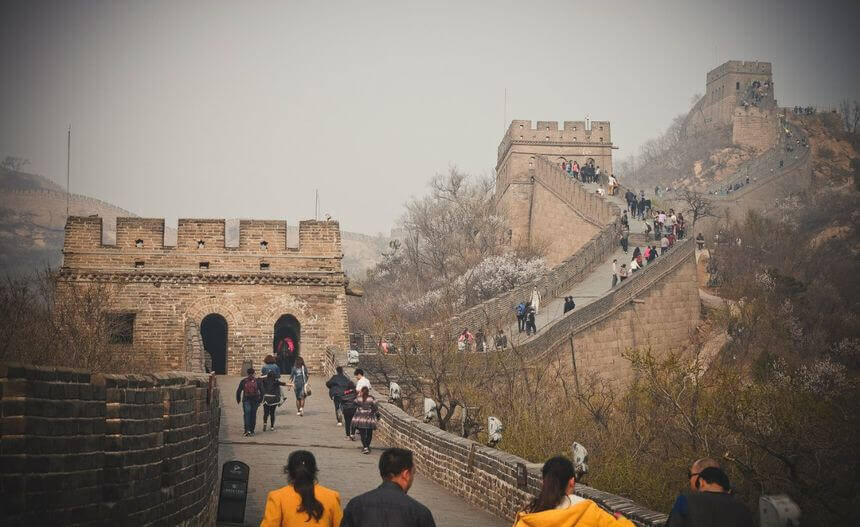
Quick Tip: If you choose to visit the Great Wall with a tour, you might want to consider going to Mutianyu instead of Badaling, as reaching Badaling can be challenging due to traffic congestion. It’s advisable to bring your own snacks as the food available at the Wall tends to be quite expensive.
With several sections open to the public, Badaling and Mutianyu are arguably the most popular. Both of these sections have been restored to their original condition. Mutianyu is typically less crowded with tourists, whereas Badaling is often swarming with visitors on weekends and national holidays.
Read Next: Travel Itinerary For One Week in Moscow
If you visit Badaling, you may also want to explore the Ming Tombs, which are about an hour’s drive from this section. The mausoleums were constructed by Ming emperors (1368–1644) to serve as the final resting place for the remains of 13 emperors, queens, and their most trusted advisors.
When I visited the Dingling tomb, it was the only tomb open to the public. It suffered significant damage during the Cultural Revolution, resulting in the destruction of most relics. With twelve more tombs in the vicinity that remain unexcavated (and thus not accessible to the public), along with a beautiful Spirit Path leading to the mausoleums, this site is worth a visit.
How to Get There: Bus 879 from Badaling Great Wall to the Tomb. Bus 877 from Deshengmen Bus Terminal to Badaling. Bus 916 Express from Dongzhimen Transport Hub to Mutianyu.
Day 7 of Your One Week in Beijing: Shopping
Whatever you do in Beijing, chances are you will want to buy something, either for fun or out of necessity. Beijing offers a plethora of shopping options. From foreign brands (often counterfeit) to domestic labels and handmade crafts, you will be spoiled for choice.
Pearl Market
When you visit the Pearl Market, haggling the prices down is essential. The market offers everything from pearl necklaces to fake sunglasses and clothing. Depending on your appearance (I typically avoid displaying gadgets and cell phones), you can receive significantly different prices. To avoid overpaying, it’s advisable to check with at least three or four vendors to understand the price range. Since most vendors don’t speak English, knowing a few phrases in Mandarin would be preferable.
Where to Find: 9 Tiantan Rd, Beijing.
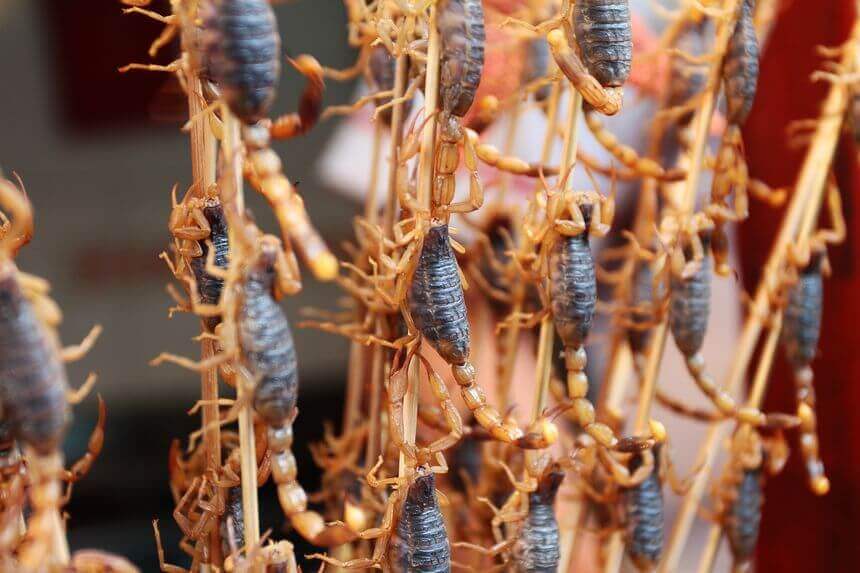
Silk Market
This multi-floored market is quite similar to the Pearl Market. Don’t be deceived; prices here are generally higher than elsewhere in Beijing, but I enjoy haggling. I was also aware that some sellers can be aggressive if you don’t purchase their goods, though this isn’t always the case. Showing respect to others is key to negotiating lower prices. Be sure not to miss the food court; it’s definitely worth your attention.
Where to Find: No.8 Xiushui East Street, Chaoyang District
Wangfujing Shopping Street
While this street is lined with restaurants and brand shops on both sides, I find it has become overly touristy. There are numerous other spots in China where you can find great deals. The reason I mention it here is for the ambiance. Visit Wangfujing Street if you want to explore exotic snacks like fried beetles, squirming grasshoppers, wiggling centipedes, or cockroaches. I wasn’t keen on spending money here, but these crispy snacks certainly added some excitement to my day (I didn’t eat them, lol :)).
If you have anything else you’d like to add or modify in this travel itinerary for one week in Beijing, feel free to share your thoughts in the comment section below.
You Will Also Like
- 15 Absolute Best Day Trips From Beijing
- Things Nobody Tells You About Visiting Beijing
- The Pros & Cons of Living in Shanghai as an Expat
- 3 Days In Shanghai: The Perfect Itinerary
- The Best Day Trips From Shanghai By Former Expat
Pin It For Later
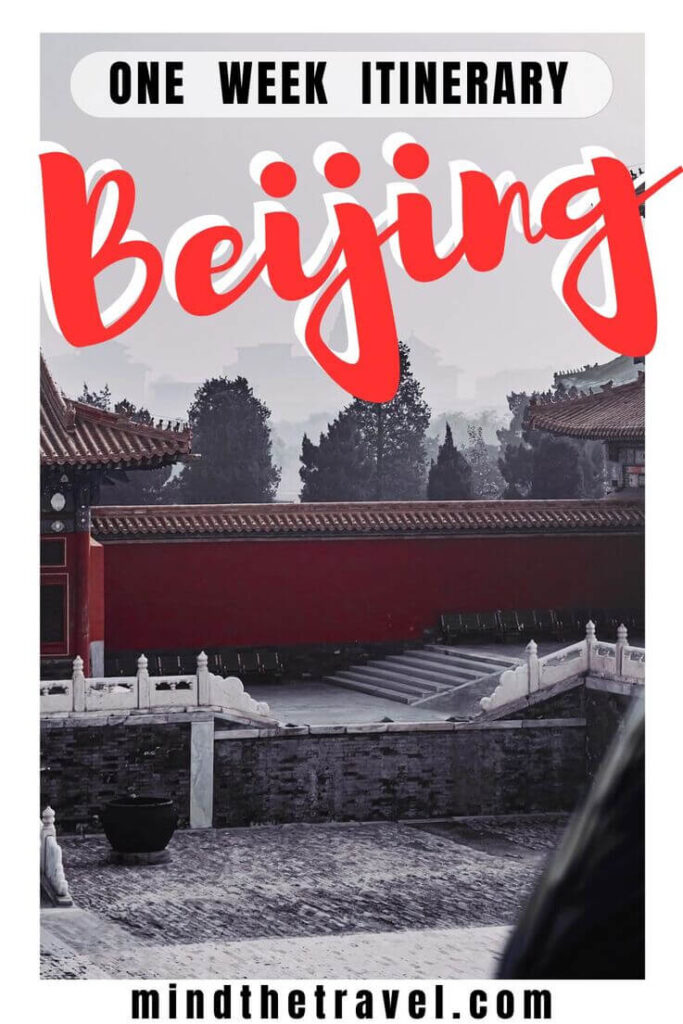


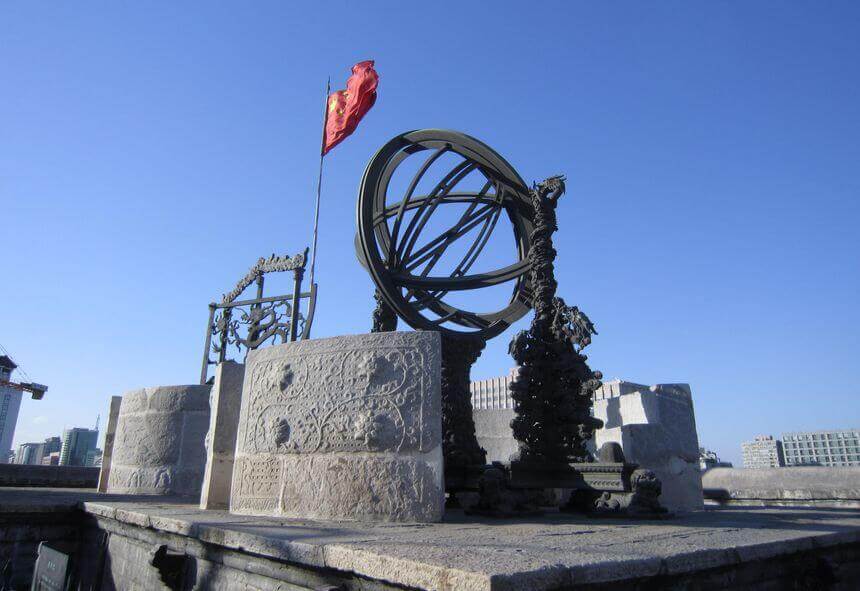
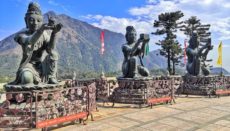
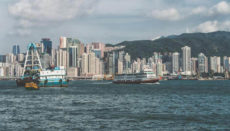
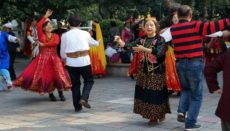
krista
this is such an awesome itinerary!! makes me want to go back to Beijing! saving this for later because my visa is good for ten years so ill have to go back!
MindTheTravel
Lucky you are! My visa has expired last spring and still not sure if I should apply for a new one with this 72-hour policy!
Jen Decaster
I always wanted visit China (Japan is higher on the list), because my best friend lived in Hong Kong and she went to the great wall. it’s good to know that you can stay there 3-days visa free.
thanks for this post. very helpful
MindTheTravel
Hey, Jen!
Depending on your interests, one or two days near the Great Wall is enough to get a glimpse of it. I always wanted to go hiking near some ruined sections of the Wall. So if you’re into this too, I think 3 days is just not enough.
Tiazim
I don’t know why, but Beijing always fascinated me. I really need to visit it one day. Thank you for sharing!
MindTheTravel
Thank you for stopping by!
Joleisa
Ivan! Is there anywhere you haven’t been?
I enjoy reading your posts and I love the pics and your writing style which makes the whole trip come alive. Silent envy here, bro.
MindTheTravel
Thank you for your kind words!
In fact, there are a lot of places I haven’t been to! My recent dream is to visit Easter Island, but I just can’t stand jet lag and that is one the reasons I haven’t made it so far!
Patricia
This brings me back to our trip to Beijing! Walking in the Forbidden City was one amazing, just trying to picture the life of the Emperors!
Alix @A Hedgehog in the Kitchen
Great itinerary! Thanks. We haven’t been to Beijing yet, but it’s definitely on our list! Next up… Vietnam!
MindTheTravel
Yeah, I love this hustle and bustle of Hanoi. Hope you will enjoy it too!
Abi
I’ve always wanted to go to Beijing and the forbidden city, I now has various other point on my wish list for when I go travelling. Fantastic post
MindTheTravel
Thank you, Abi!
Tony Wilson
Thanks for the read. We are looking into heading back again soon, so you have provided some great ideas. We did a 1 day tour in Beijing of The Forbidden City and Mutianyu Great Wall, and it was definitely worth doing.
MindTheTravel
Totally agree on that! There’s never enough Beijing! As I have mentioned in the post, I have only scratched the surface during my trip. Beijing is a large city with almost 21.5 million people living in it, so every time you go there is always something new to discover!
Ridima Mittal
That’s a great detailed itinerary. Love the 72 hours visa free policy 🙂
Roger Keyserling
I sent this article to my sister who has actually been to Beijing she responded and said that it was very well written and that you had all the best places. I really wish I could go one day. I really enjoyed reading this article thank you for sharing it and my sister thanks you as well
V at LoveBecomesHer
good idea bringing something written that has basic info and locations on it, totally works.
Constance
This is a great itinerary! I definitely could’ve used it on my last trip to Beijing. And I totally agree with you, China isn’t exactly the most English (or any language other than Mandarin) friendly but it’s a great place to practice your Chinese!
Cristina
So many things to do, I’d love to visit one day!
Nadene
Fascinating but a challenging place to visit in my experience. this guide may help others enjoy their Beijing experience.
Nate
Great itinerary. My favorite parts of my last trip to Beijing were the Hutong Tours, Beijing Observatory and of course seeing the Great Wall!
Mrs T
Thanks for this great read! It looks like an amazing place to visit.
RED RIDING HOOD
My friend is suppose to move there for work. I am next to visit him. So I read this very carefully 🙂
Floby Villaralvo
Loved the day to day detailed. Interesting and fun filled!
Marina
Photos are stunning! I think a month wouldn’t be enough to explore all…there is so many things to visit.
deanna
You shared a lot of good travel tidbits in this article. I have never been to China and this was an informative post.
Iman Adnan
Wow. That is some detail. I definitely will know where to go when I’m going to Beijing.
MindTheTravel
Thank you! Hope you will love Beijing!
tiazim
It sure looks like an amazing place!
Diana
Agreed – Beijing is a great city!
Jordan
Hoping to travel to Beijing sometime in 2018! Thanks for all the awesome info!
Rea
That’s a lot of details! I never thought there are many things to do in Beijing. A good article to take note when traveling there someday
DenverPainters
What a wealth of information. Bookmarking this when I go next time!
Neha Tambe
Beijing looks like a beauiful place with the right mix of modernization and culture. Your post is extremely helpful for those planning to travel to Beijing and I didn’t know about the three day visa free policy!
Followingtherivera
I’ve never been to Beijing but would like to now! The palace of heaven looks wonderful, and I’ll take your tip on the taxi with no meter! No thanks!
Gabriela@IamFoodieTraveler
Oh my God, you just made my day! I was looking around about getting a visa, since I was thinking to extend my layover in Beijing, and now I just checked, my country is one of the 50+ countries that don’t need a visa for 144 hours !
Thanks for sharing
Carly Susanne
I’ve never been to Beijing but it sounds amazing and I would love to go! x
♥ Carly Susanne ~ A Beauty & Lifestyle Blog
Jenny Becker
Sounds incredible! I might have to move this trip up on my bucket list 🙂
Erika Ravnsborg
Wow! That looks incredible. I always knew China was beautiful but wow!
Sarah
Wow! Bookmarked for y next trip to Beijing. Thank you 🙂
Mimi
This is extensive! I know now which way to go when I come and visit.
Chloe
Wow you did a lot in Beijing! Definitely keeping this guide in mind. I have always wanted to visit Beijing! 🙂
xo, Chloe // https://funinthecloset.com/los-angeles-winter-popjulia-review/
Pooja @ Peaceful Banyan Tree
Wow, such a detailed and perfect itinerary. Anybody can plan to visit Beijing without a guide 😉 This makes me want to travel there!
Mark Maranon
Thinking about visiting Beijing in a November/December this year and will definitely pin this as my guide!